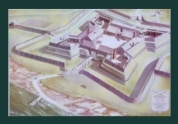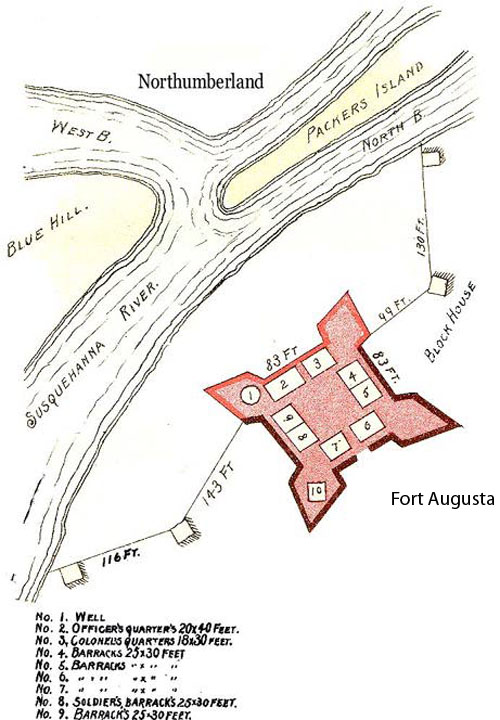A History
/SusquehannaRiver.jpg)

| Main Page |
| Time Line |
| History |
| Indian Trails and Shamokin (7000 BC-1763 AD) |
| Fort Augusta (1756-1792) |
| Founding of Sunbury (1772-1830) |
| Railroad and Canal Era (1830-1912) |
| Contemporary (1912-present) |
| Maps |
| Indian Trails and Shamokin (7000 BC-1763 AD) |
| Fort Augusta (1756-1792) |
| Founding of Sunbury (1772-1830) |
| Railroad and Canal Era (1830-1912) |
| Contemporary (1912-present) |
| Special Topics |
| Related Links |
| Works Cited |
.

Courtesy of the Northumberland County Historical Society
From 1718 until the start of the Frenc and Indian War Shamokin was the largest Indian town and trading center in Pennsylvania. On July 8, 1736 it was described as having eight huts beside the Susquehanna with scattered settlements extending over seven to eight hundred acres between the river and the mountain. Shamokin’s abandonment occurred in the days leading up to the French and Indian War. Terrified of vengeful white soldiers, the Indians packed their few belongings, burned their homes, and fled. Fort Augusta was built in 1756, only a matter of days after the destruction of the Indian town. It remained a strong hold until 1794, some twenty years after Sunbury was built. Though it was never attacked, its presence protected the settlements and city by provoking fear in the hearts of its enemies. Early in its history it served as a center of trade between soldiers and Indians, during the Revolution it provided a refuge to women and children who were chased out of their northern homes, and in latter years it was both a base for operations and supplies, as well as a meeting place for town citizens. Its ideal location at the confluence of the river made it both assessable and formidable.
The Bucknell Environmental Center▪ 835 Fraternity Road ▪ Bucknell University ▪ Lewisburg ▪ PA 17837▪ (570) 577-1490



